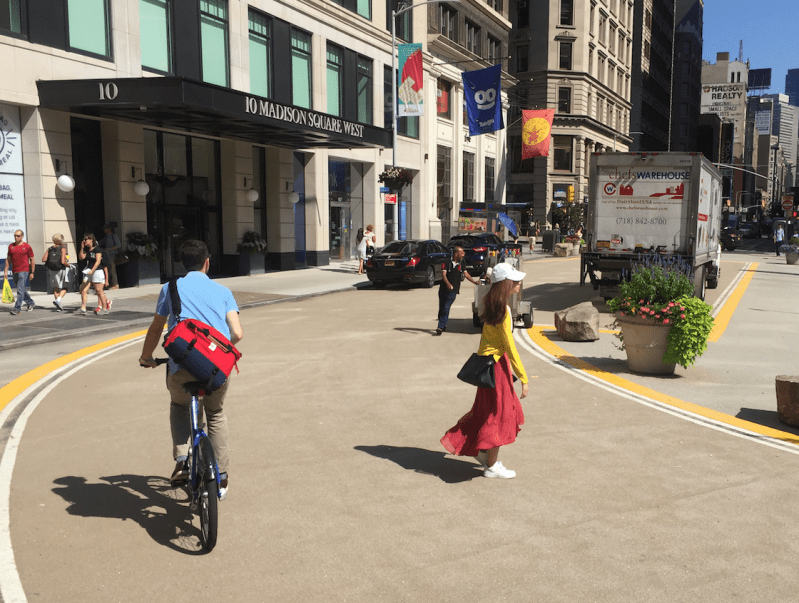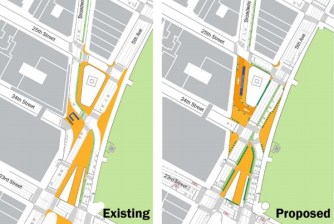DOT’s New Flatiron “Shared Space” — a Rarity or the First of Many?
Pedestrian-priority treatments make sense for many streets in NYC. So far, DOT is thinking about turning a few more blocks into shared space, but not expanding the concept on a citywide scale.

DOT officials cut the ribbon this morning on the new “shared space” on Broadway near Madison Square Park. Between 24th and 25th streets, motor vehicle pick-ups and deliveries are permitted, but pedestrians take precedence [PDF].
Pedestrians outnumber motorists 20-to-1 on this particular block of Broadway. The shared space design recognizes that by formally letting people on foot use the whole street. “It’s a space where motorists, pedestrians, and cyclists all travel together safely, with cars traveling at a reduced speed and with pedestrians having more options to circulate in an area,” DOT Manhattan Borough Commissioner Luis Sanchez said.
Now the question is — how far will NYC DOT run with this idea?
The Midtown East rezoning approved by the City Council today will pay for several street-level changes, including a pedestrian-priority street outside Grand Central on 43rd Street between Lexington and Third. DOT is also conducting a shared space pilot on Mott Street in Chinatown from 5 to 9 p.m. on the first three Fridays of this month. Beyond that, there doesn’t seem to be a strategy for scaling up shared spaces.
On one August Saturday last year, DOT tried out a bigger shared space experiment for a few hours in a 60-block radius in the Financial District, where narrow low-traffic streets are ripe for pedestrian-priority treatments. Sanchez said DOT’s experience with the Financial District informed its decision to move forward with permanent shared space projects, and in an interview with Streetsblog last year, DOT Commissioner Polly Trottenberg said other neighborhoods downtown, like SoHo, are good fits too.
But DOT has no plans to revisit the bigger, neighborhood-scale Lower Manhattan shared space concept at this time.
Pedestrians outnumber cars on blocks all over the city, and the concept of giving people more freedom to use the whole street could work on residential streets as well as commercial areas like the Flatiron. This new “shared space” template could be New York’s answer to Barcelona’s “superblocks,” which maintain local access for motor vehicles, not through routes, while putting pedestrians and cyclists first.
With one shared space in the bag, it’s time to think big about where else the treatment can work.


